-
Posts
210 -
Joined
-
Last visited
Content Type
Profiles
Forums
Articles
Gallery
Downloads
Events
Posts posted by Cavpilot2k
-
-
I'll second the jackhammer (pavement breaker, really) bits. THat bucket pictured above was indeed mine.
I got those for nothing. I stopped by a tool rental place and asked if they had some spent ones. I offered to pay, but the guy said no - he'd rather give them away than bother making the trip to the scrap yard for the pennies he'd get for them. I am going to make him something from one of them and give it as a gift.
The only downside is that they are a pain to hammer, but it's a good lesson. If you have a 1" hardy hole, they don't even require that much hammering to square up the shank. he built-in collar is awesome.
Here is the hot cut I just finished yesterday from one. I left the shank long so that if it gets stuck, I can tap it from the bottom. It fits snug, but not "tight".
-
Good point!
I have a 3 lb sledge that is solely dedicated to striking other tools (punches, drifts) and hot cutting. It never contacts working steel, so if its face gets a little marred, I can live with it.
Mod note: there is no need to quote the immediately preceding comment in its entirety when replying. We can all see what you’re responding to.
-
Hot cut hardy from a pavement breaker bit (I like the collar).
I hammered (all by hand - my forge is pretty primitive as far as power tools) the shank square from the original hex shape, then cross-peened the heck out of the thing to rough shape. Finished with grinder.
It was originally about 3/4" taller (unnecessary, really), until I burned the edge in the forge in the last heat before treating - GRRRR! So I cut off the burned part and realized I still had plenty material to finish.
Oil quenched, tempered to deep straw/gold.
Rubbed generously with gun oil to inhibit rust.
It cut a horseshoe and some 1/2" mild square stock easily without damage to the edge, so I'm happy with it.
Input and suggestions for improvement on the next one welcome!!
-
I like it. Planning several similar hatchets. Right now I am refining my hatchet-making technique on some rail spike hawks.
-
Nice work! I've got few old ball peen heads of various sizes destined for similar projects once I get my hatchet technique refined on some railspike hawks.
-
4 hours ago, Steve Sells said:
If you have bothered to read the HT sticlys you would know food oils were never designed for quenching, McMaster- Carr 11 second, and Parks 50 and AAA were designed just for that, Sorry if your MA gets in the way of understanding , I wont waste your time any more.
and contrary to what a few people think, you dont get banned for disagreeing with us
Steve,
First, my apologies for getting a little curmudgeonly/grumpy myself last night - long day. Let me back up.
I've seen several places where you refer people to the heat treat stickies about quenching oils, but nowhere can I find them, and I consider myself not dumb or unsavvy when it comes to computers and forums. There are only four stickies under heat treating general discussion and none of them deal with quenchants. Nor are such references under knifemaking classes, etc. SImply put, I can't find them, and if I can't, there a decent chance some other folks may not be able to either.
I totally understand that you senior smiths here with your massive amounts of knowledge and experience get tired of saying the same things over and over again, but perhaps a better approach might be to provide a link or two, because again, I'll be xxxxxx if I can find the stickies to which you refer.
Of course we novices know that food oils were not made for quenching, they are made for...food. But you know probably better than most of us that quenchants manufactured specifically for that purpose are a very recent invention in the timeline of smithing, so there have to be acceptable substitutes for the beginner.
Anyway, again my apologies for being a little grumpy with you last night - I just got frustrated at the suggestion to refer to references that should be readily findable (especially if they are fundamental information), but are not. Again, links would be helpful.
Cheers!
-
13 hours ago, Frosty said:
I have to consider the OP in this thread, the fellow is TEACHING other folks without some pretty basic knowledge. Disagreeing about which really general term is best misses how basic the knowledge lack really is.
Unless I read it wrong, the OP is not teaching, but rather taking classes, so being "without some pretty basic knowledge" is understandable.
For the purposes of this discussion, I don't think there is any disagreement about which general term is best, but just wondering what Steve means when he says "do it right" and buy "real quench oil", suggesting that anything else (canola, peanut, motor, etc) is doing it wrong. Except instead of providing a clear answer, in good curmudgeon form, he references a pre-existing post or article that is not readily findable (or maybe I'm just dumb or slow, Masters from Harvard notwithstanding).
I know I fully expect to be banned for a while for daring to quibble with curmudgeons, but I think Steve's post is about the most un-helpful thing I've read this week. I mean we all expect a degree of grumpiness from the old-timer curmudgeons, but come on...
Smiths for centuries and plenty of people today successfully use vegetable oils and a variety of other media that are not commercially produced specifically to be high-performance, specific-purpose quenching oils.
Bottom line for the OP: yes, water as a quenchant is probably setting you up for failure, and there are a multitude of inexpensive and "field expedient" options out there that will likely solve the problems you are experiencing.
And with that I bid you good day (possibly permanently).
-
That would be great, but you say that as though it's clearly labeled and easy to find.
There is no sticky with any label referring to "real quench oil" under general heat treating info. The only stickies there are about the evils of motor oil, general heat treat information (which does not mention real quench oil, at least in the initial post), one about a tempering oven, and one about a heat treater's guide.
Or one could look under the "all stickies here" sticky, which also does not have a sticky relating to "real quench oil".
I don't mean to sound like a smartxxx, but when you say things like " oh, just read XYZ" and the article on XYZ is not easily or intuitively located, such guidance is pretty much useless.
Can you explain where the reference to real quench oil is? Because if it is under the Heat Treat Information sticky, it isn't easy to find.
-
My relatively novice two cents:
There's nothing wrong with canola oil as a quenching oil - it's cheap by the gallon and food grade, so not toxic. Xxxx, when I was first filling my AMMO CAN quench bucket (a large one that holds a little over 3 gallons of oil), I left it unattended while going into my shed to get another gallon of oil, and came back to my dog lapping it up out of the ammo can! No harm though - it was fresh, unused canola oil.
Maybe $30 for an oversized ammo can and a few gallons of oil (yes, canola, etc are perfectly fine - whatever is cheaper) and you're in business. The ammo can will have a handle and should be water-tight, so you can even transport it from home to the forge and back if you don't want to leave it there.
-
I'm not sure what the scale is supposed to add to the mix or if it actually detracts from it, but they use it.
But I could probably substitute nose hair clippings and it would do the same thing.
-
I have to say, now that I've begun using it regularly and in earnest, I absolutely love my 173 lb Fisher. My forge setup is outside (I keep the anvil oiled and under a grill cover) and I am certain my neighbors appreciate its lack of that classic bell-like ringing. The thing is a workhorse!
-
I've seen an improvised super-cheap/easy solution of a mix of wax (bee's or paraffin), coal dust, and swept up forge scale. I tried it - Seems to work well.
-
Beautiful work! Truly!
That pattern is striking.
-
Are we still talking about tangs? ;-)
-
On 2/7/2018 at 12:30 PM, ThomasPowers said:
ISTR an Arthur C Clarke story I read in the 1960's where it mentions that if you can't find data you have stored then it essentially doesn't exist for you...
Schrödinger's data?
-
Beautiful blade and a brilliant and elegant design solution to the problem. Kudos!
-
Relative newbie here too, but curious why you think a horizontal quench (edge-in first, not held flat) would cause warping on a blade this length. I can see the advantage to vertical quenching on something of sword-length, but I wouldn't imagine knife-length would matter.
I'm really asking not to sharpshoot you, but for my own edification, because I too, use a more horizontally-oriented quench setup (a belted 40mm Mk-19 ammo can), and am moving to larger knives up to 18" overall, and I am hoping I am not setting myself up for an unforeseen problem.
-
Piggybacking on the OP's question, I have a bunch of old jack hammer (actually pavement breaker) bits I am planning to turn into hammer and axe drifts (historical style axes and war hammers, not modern-style) .
They should make decent drifts, right?
I also plan on making a few war hammer heads out of some of them too.
-
They will, however, make a decent throwing tomahawk, or if you forge weld a high carbon bit on the end a nice working hatchet, but that is a topic for another section...
-
Very nice piece!
Have you done anything to coat or treat the copper to keep it from tarnishing?
-
Also, Prospect Hill Forge in Waltham has an excellent three-day knifemaking class, where you will learn to do it without power tools. All coal forge, hammer, anvil, and file.
-
21 hours ago, Hans Richter said:
As long as the epoxy is hidden and not visible I will use it. Have problems with my heel axes to attach them to the wooden knot handles (shrinking). As long as I’m not able to extract (get) birch resin.
Quote trimmed
You just happen to have a replica of the Venus of Willendorf on your anvil? lol
-
-
3 minutes ago, Will W. said:
Those hammmer marks are not incredibly difficult to remove, and requires no power tools. Just flatten the steel while hot. Use a thick bar of mild steel and hammer it down right onto the blade. The bar acts as a top swage and the anvil, the bottom swage. Takes a few heats if the marks are deep, but it is WAY faster then draw filing it
Interesting blade shape, for sure. What are your plans for the handle? Leaving it the way it is? I assume this because the tang looks way thick for a hidden tang handle.
Handle: Yes, leaving as-is, but I may do a leather wrap.
I'll keep that in mind for flattening hammer marks. I knew it was going to be rough finish anyway, so I'm fine with them, especially considering it is only the third thing I ever made forging (the first was a bottle opener, and the second was a mild steel practice knife to learn some basic shaping technique).


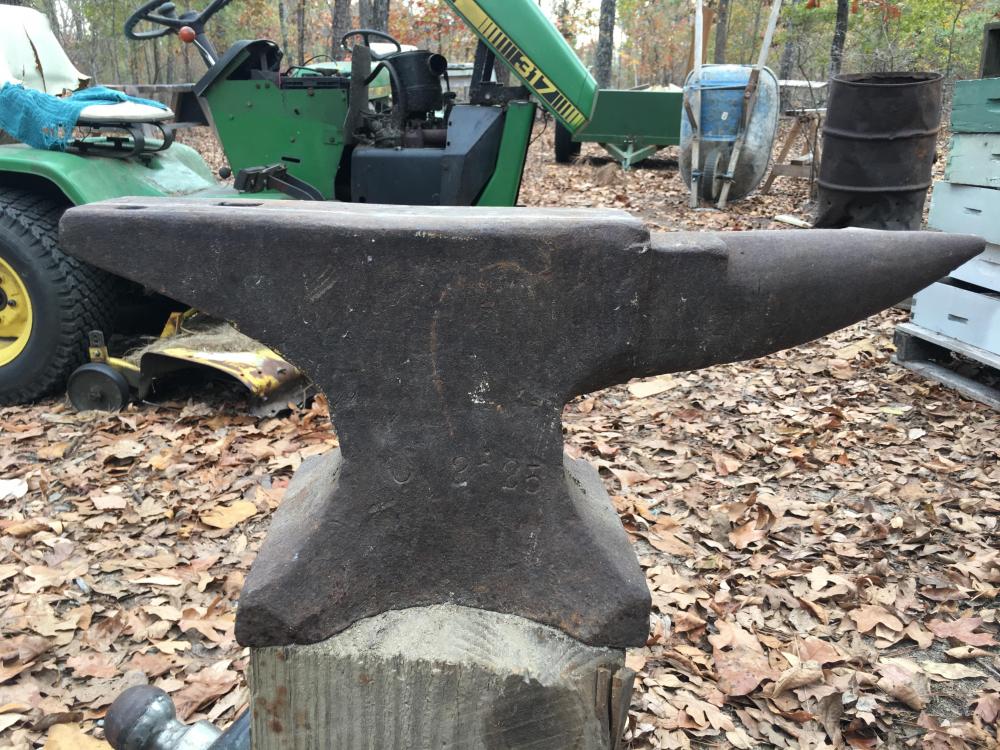
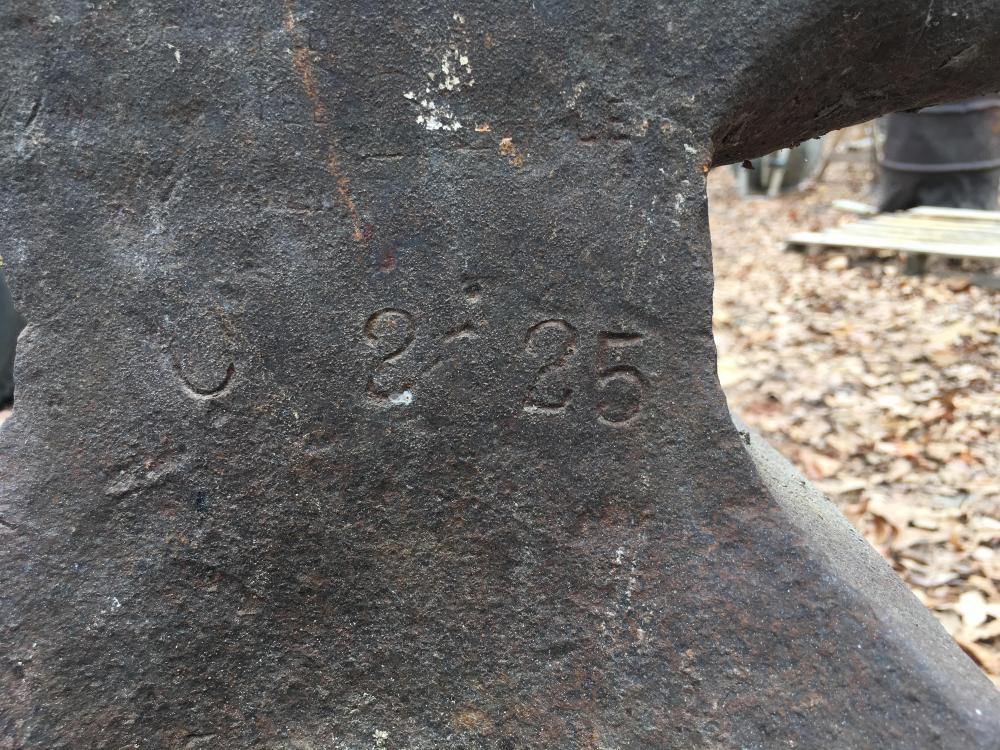
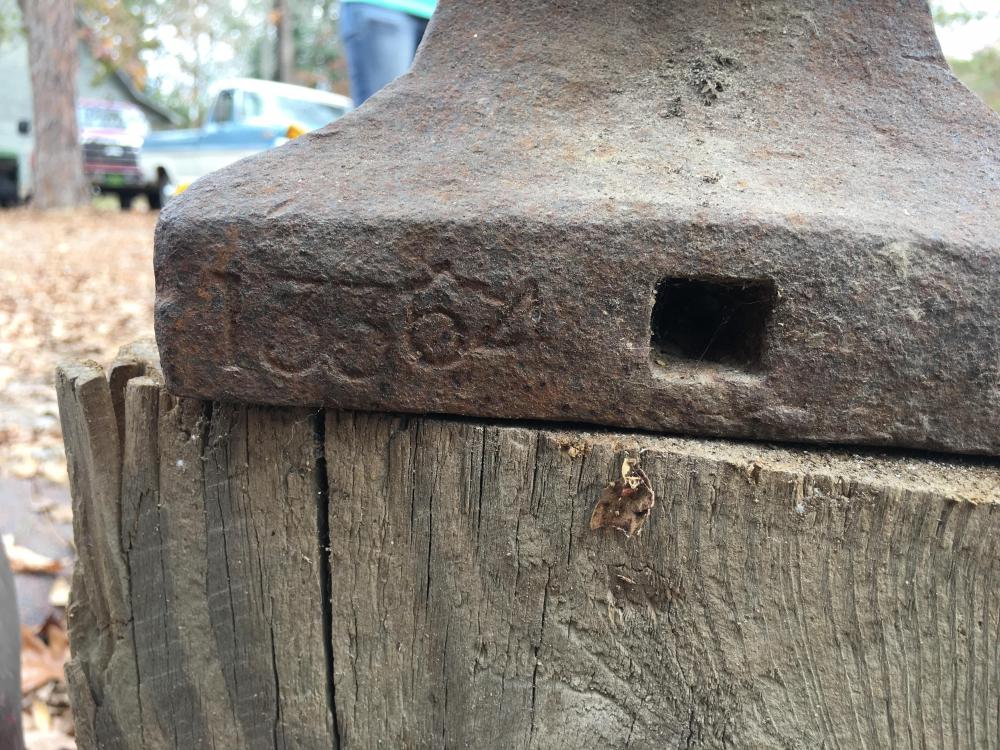
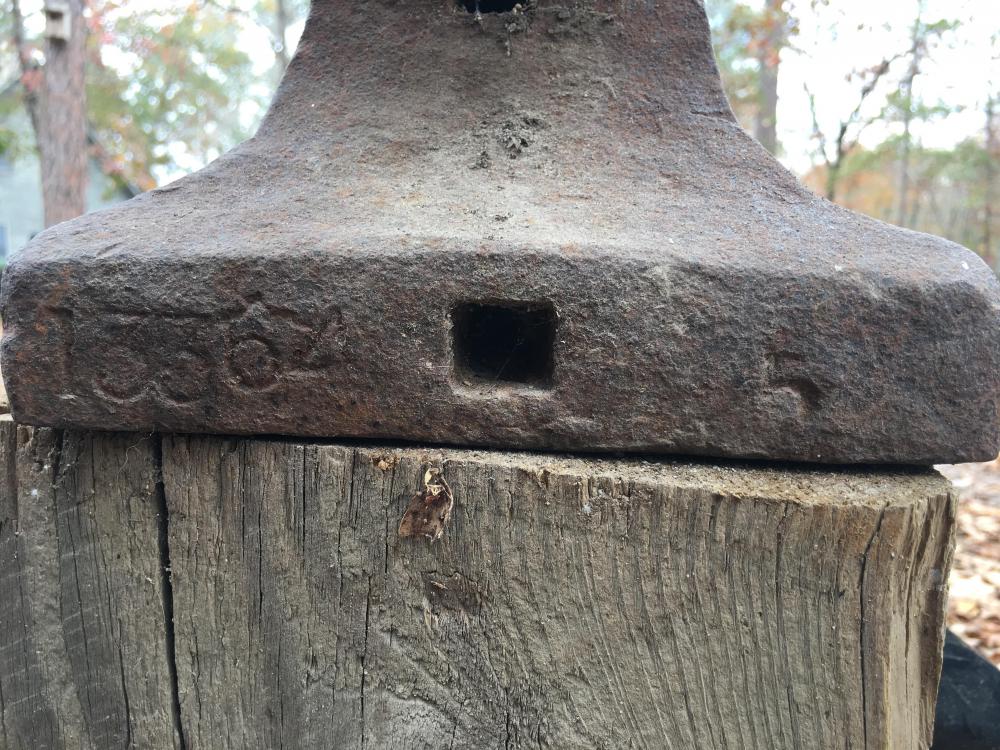
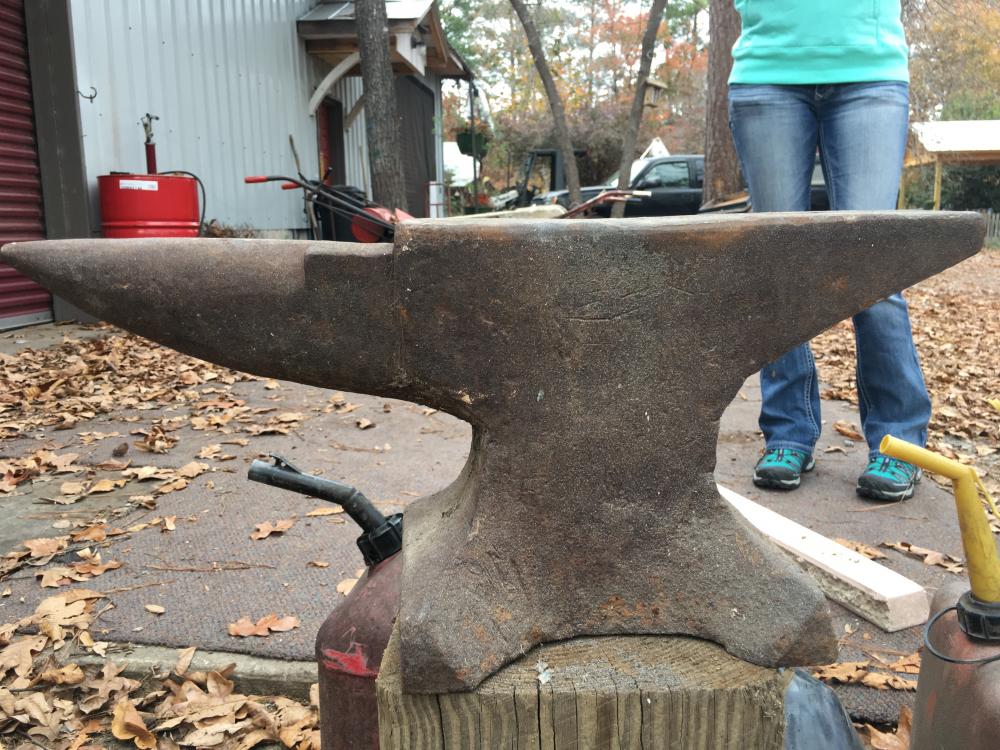
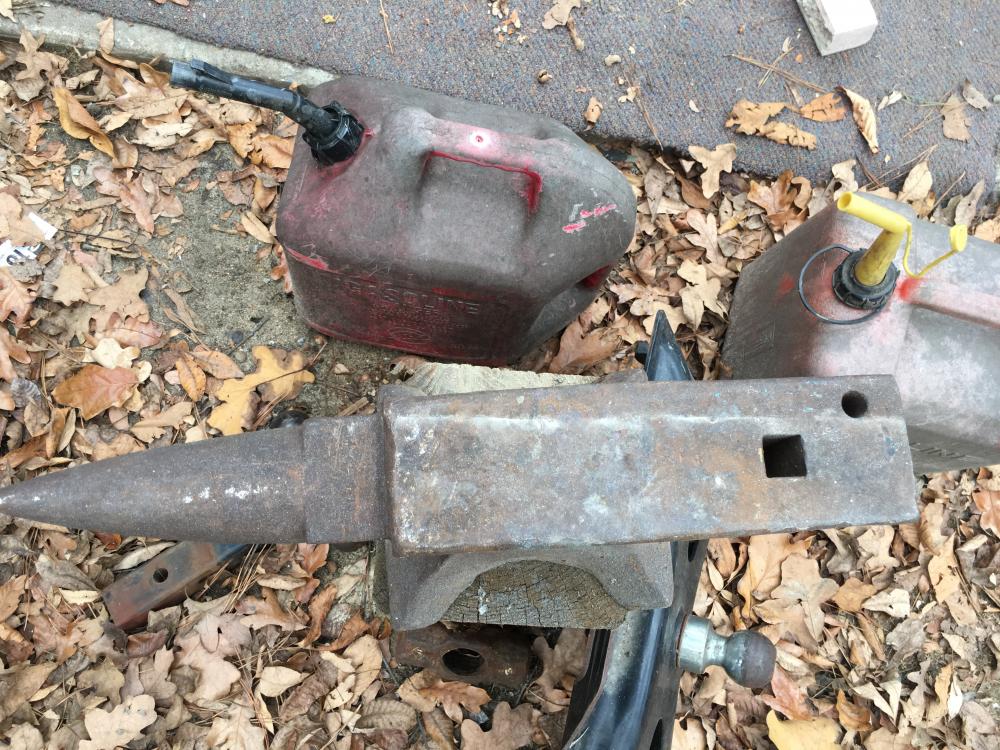
Hot Cut Hardy -- What should I use?
in Hot Cuts, Anvil devils, metal cutting on the anvil.
Posted
I plan on using the rest of the non-collared portion of my bits for drifts and warhammers.